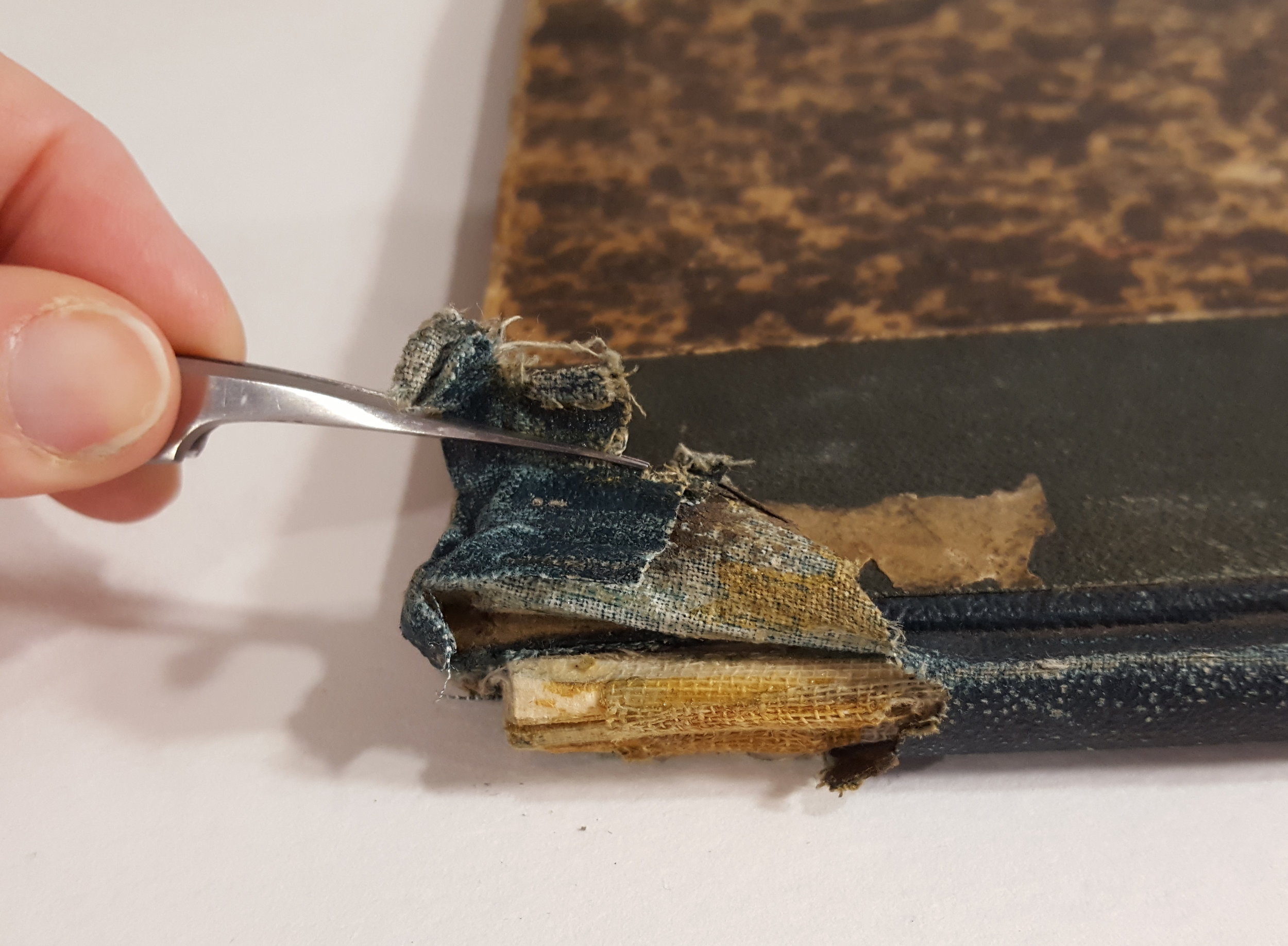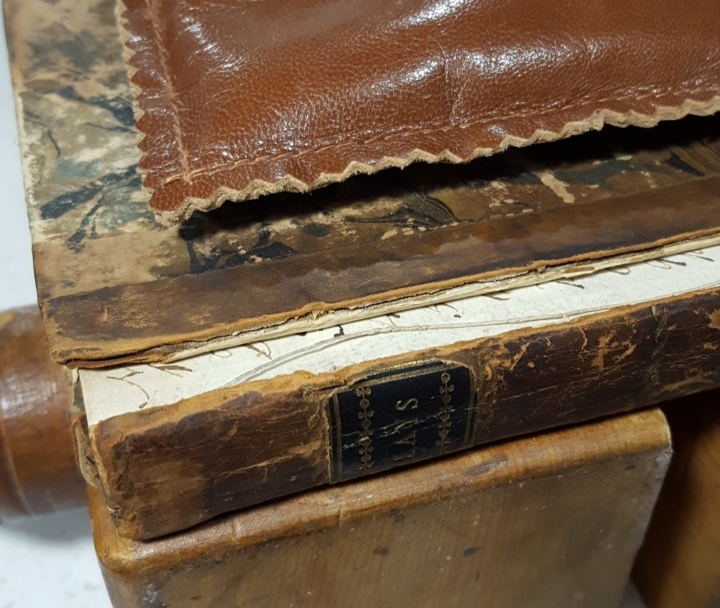One of the challenges of rare book conservation is that books are composite items that can contain many materials, including paper, cloth, thread, board, leather, and various media. The combination of materials and the mechanical action necessary to use a book create problems and damages; a conservator skilled in the conservation of both paper and bound volumes is uniquely qualified to repair and restore rare books.
This delicate item, Atlas de L'Europe Militaire, 1880, recently came through our studio needing repairs to both the binding and the fold-out maps inside. Maps in books are quite often found in disrepair; due to the nature of folding and unfolding tears are very common, as well extra creases and soiling along folds and edges. Rough handling of the oversize volume had also caused some damage to the cloth spine.
Large fold-out map with tears and breaks.
Repairs to the maps involved lining up and repairing the tears with Japanese tissue and wheat starch paste. Fills were also made to replace lost areas of paper.
Preparing to repair tears with Japanese tissue.
Fold-out map torn along creases.
The map is repaired and properly folded.
Next, repairs to the cloth spine were performed using Japanese paper toned to match the colour of the original binding material. Repairs were executed on the spine and both endcaps where the cloth had frayed and torn, stabilizing the back of the book.
Damaged cloth spine.
The spine of the book is repaired.
The finished atlas.
These repairs have brought a ragged rare book back to a tidy and stable condition, allowing the binding and maps to be safely handled and enjoyed. If you have similar rare or antiquarian books you are interested in having restored, get in touch with us today.


















